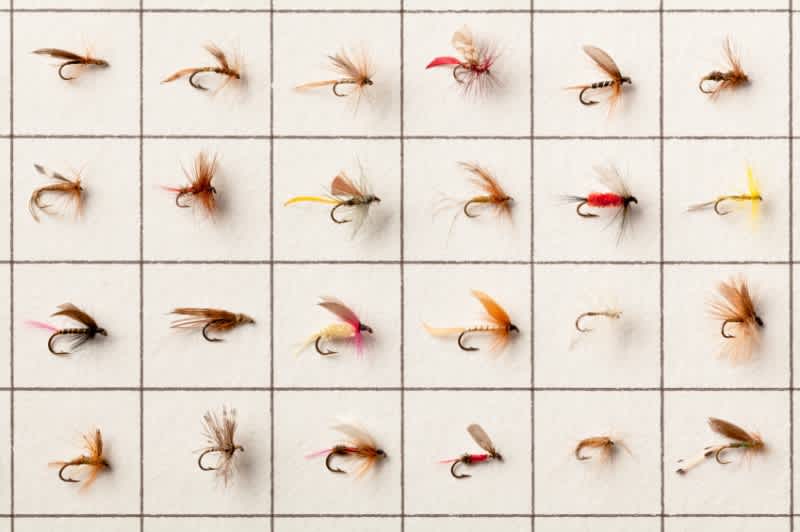The World’s Best Fly
Don Moyer 12.27.12

A short while ago, I wrote a column about which rifle cartridge I considered as the best all-around caliber. Some of you agreed with me and some did not. It was a fun exercise, in part, because it gets people to thinking, about why they prefer one gun over another. As it is with gun calibers, so it is with one’s favorite fly. No matter what fly I pronounce the world’s best fly, there are going to be folks who disagree with me. So be it. If you don’t agree with me, that’s fine, but at least we get to examine the subject of what might constitute the world’s best fly.
Fly fishers are a weird lot. They spend countless hours trying to outwit a primitive creature with a brain the size of a pea. Then, if they are successful in catching a fish on a fly, they congratulate themselves on how brilliant they are. No doubt about it, fly fishers are a weird bunch. Your favorite fly is very likely to be a function of how well it catches fish when you use it. I suspect that there is also a large dose of self-fulfilling prophecy at work here. It’s sort of like Dumbo the Flying Elephant with his magic feather. If you believe that your fly is the best one available, then you fish more confidently with it, and lo and behold! You catch more fish.
As a kid, I recall visiting old Carp’s Tackle Shop in the springtime to stock up on crappie jigs. While crappie jigs come in a host of different shapes, sizes, and color combinations, Old Carp swore that the secret to really catching a lot of crappie was to use small red and white jigs. Carp kept a supply of the magic red and white jigs, out of sight under the counter. When no one else was looking Carp would whisper, “Come here, Nimrod, and I’ll let you have some of my special crappie jigs. Don’t tell anyone else where you got them, because they work so good pretty soon all the crappie will be fished out”.
After a build up like that, you had to buy at least a half dozen of Carp’s jigs. I suspect that every kid in town fished with Carp’s secret crappie jig.
Trout flies are no different. Everyone has his favorite fly. For some it’s a flashy red white and green fly called the Royal Coachman. For others it’s the delicate muted hues of the Adams or one of the other Mayfly imitations. Regional favorites abound as you move from one water to another. If you’re on the Rio Grand River in Colorado, then you feel almost like a heathen if you aren’t fishing with a Rio Grand King. On the other hand if you’re fishing little Mill Creek in the Ishi country of Northern California, then you’re almost honor bound to fish with a Mill Creek Queen. The last time I heard, tiny size 16 pink scuds were the fly of choice for the Greene River in Utah.
Terrestrial flies are pretty much mandatory if you’re fishing a grassy meadow stream where the dry land bugs are regularly falling into the trout’s world. Flies tied to resemble ants, beetles, grasshoppers, and bees are known to be great producers in a grassy meadow stream like the Owens River in California. Trout love to gulp them whenever they get a chance for a tasty snack that drifts in front of them. No matter what water you fish, there is bound to be a local fly that anglers in that stream will swear by.
Of course, the well-equipped fly fisher will have numerous fly boxes in his vest that are stocked with hundreds of variations of flies for every possible eventuality. At over a dollar per fly, you could go broke trying to stock your fly boxes with every possible fly variation for every possible situation. Bass flies and salt water flies are even worse, and can cost you over $5 per fly! That’s a major incentive to tie your own, but that’s a whole different topic for another day.
Like most of my angling brethren, I too carry endless boxes of flies for almost any situation. Mea culpa. I do, however, use one fly for about 90% of my fishing. It produces on waters from the Shennandoa in Virginia, to the Tuolumne in California, and from the Greene in Wyoming to the Rio Grande in Colorado. For my money, the black woolly worm is the world’s best fly. It will catch brown trout in warm water, rainbows in white water rapids, brookies in small headwaters and cutthroats on the rocky bottom of Pyramid Lake. If I had to use only one fly it would most certainly be the black woolly worm. Oh. I’ll use all the others along the way, but for my money, the black woolly worm is the world’s best fly.
Let me know what you think.

